
Communicating the microscopic world
Monash University Biomedicine Discovery Institute
Overview
The School of Biomedical Science at Monash University launched a research hub to establish cross-disciplinary and industry connections along with showcasing its research. The key aspiration of the public interface of the institution is to reflect and communicate the ground-breaking discoveries made within the building.
A continuous surface created by the tessellation of cellular shapes made from fibreglass, is punctuated by a series of ocular openings. The surface opens to reveal and magnify artefacts and research discoveries, akin to a microscope. An interactive timeline of research undertaken at Monash is projected within the space. Plinths, screens and vitrines are further integrated throughout the space which continue the presentation of this story from a brass cast of a kidney to a 3d-printed protein molecule. (Sibling Architecture worked closely with Monash design students to integrate touch screens, 3d-printed models and holograms allowing for content to be uploaded as new discoveries are made.) The color and textures of the outcome reflect the working methodology and artefacts of the researchers brightly coloured microscopic photography, crystallography, and chemical reactions. These spatial devices transport the user of the space out of the everyday through a range of different scales into a microscopic world.
Collaboration is integral to the advance of research, which is reflected in the design of the interior. The space transforms into a social hub, a place where researchers, academics and industry mill about, hold impromptu meetings and flip open their laptops at stand-up desks or present new research.
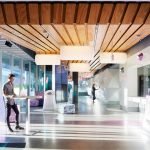
A key aspiration for the public interface of the Institution was to reflect and communicate the ground-breaking discoveries made within the building.
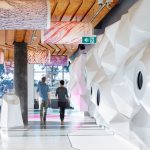
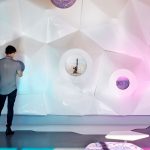
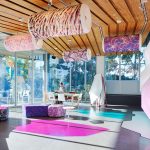
Equally as important to the success of the space was transforming it into a social hub, a place where researchers, academics and industry mill about, hold impromptu meetings and flip open their laptops at stand-up desks.
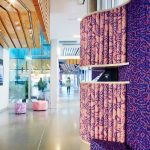
The colour and textures of the outcome reflect the working methodology and artefacts of the researchers - brightly coloured microscopic photography, crystallography, and chemical reactions.
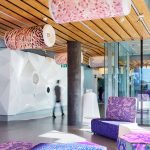
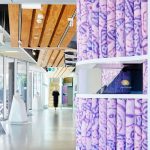

A key aspiration for the public interface of the Institution was to reflect and communicate the ground-breaking discoveries made within the building.



Equally as important to the success of the space was transforming it into a social hub, a place where researchers, academics and industry mill about, hold impromptu meetings and flip open their laptops at stand-up desks.

The colour and textures of the outcome reflect the working methodology and artefacts of the researchers - brightly coloured microscopic photography, crystallography, and chemical reactions.





